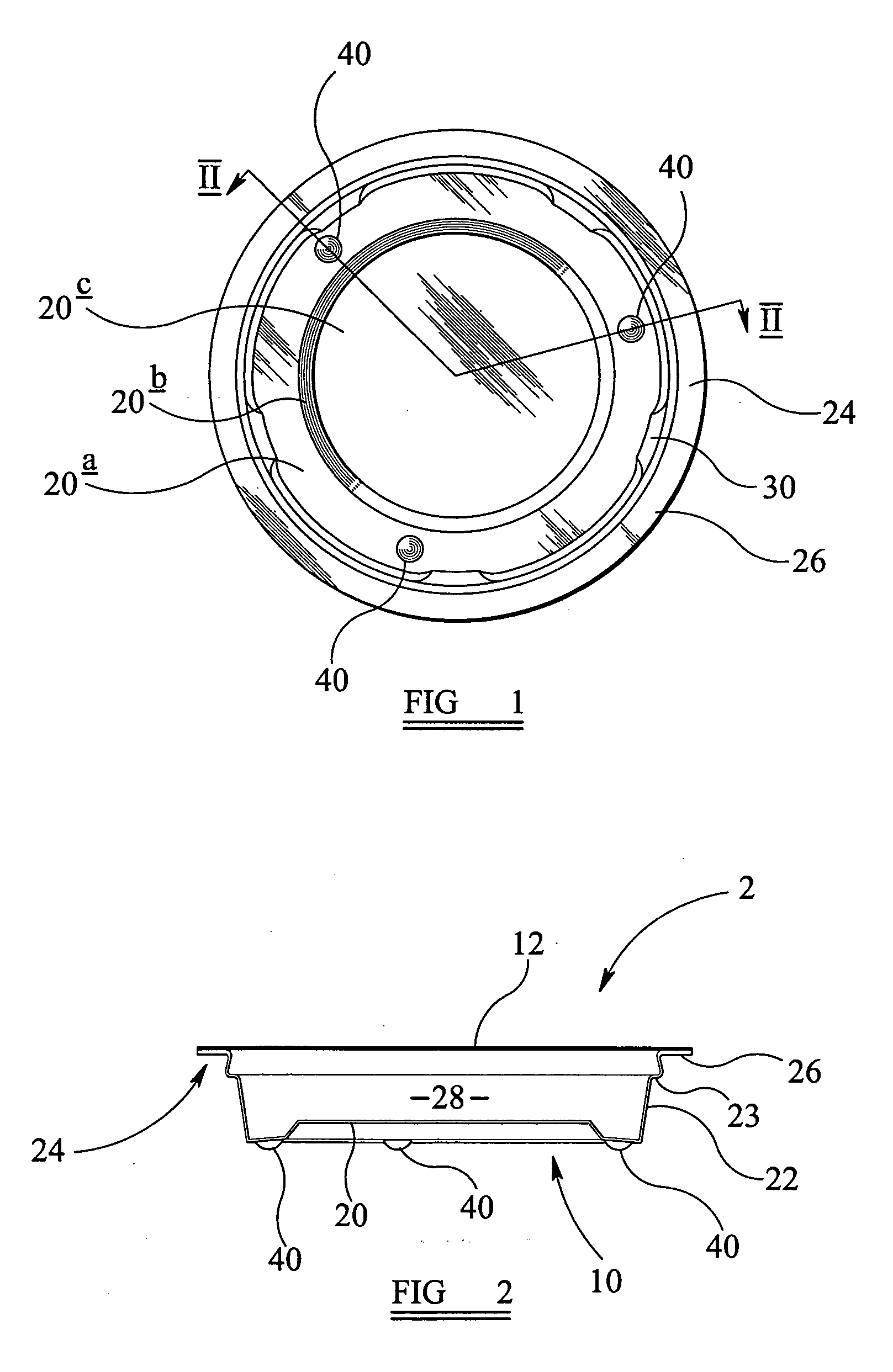Animal feeding bowl
a technology for animals and food bowls, applied in the field of packaging, can solve the problems of spoiling the remaining food for the pet, health problems of the pet, and the inability to store the food for the pet with the food for humans, and achieves the effects of simple manufacturing, quick and easy production, and no additional was
- Summary
- Abstract
- Description
- Claims
- Application Information
AI Technical Summary
Benefits of technology
Problems solved by technology
Method used
Image
Examples
Embodiment Construction
[0015] Referring to the Figures, packaging 2 which may also be used as an animal feeding bowl is shown. The packaging 2 comprises a central bowl 10 and a releasable lid 12.
[0016] In the illustrated embodiment, the central bowl 10 has a base 20 and a generally upstanding peripheral wall 22. As shown in the illustrated embodiment, the base comprises an outer ring 20a separated from a central substantially planar region 20c by an inclined surface 20b. It will be understood that other forms may be adopted for the shape of the base 20.
[0017] The peripheral wall 22 as shown in FIG. 2 comprises a lower region slightly inclined to the vertical and an upper region which inclines in the opposite direction to the vertical. The upper and lower regions of the peripheral wall are separated by a shoulder or ledge 23. However, it will be understood that other forms of the generally upstanding peripheral wall may be provided for. The peripheral wall 22 is provided with a rim 24. In the illustrated...
PUM
 Login to View More
Login to View More Abstract
Description
Claims
Application Information
 Login to View More
Login to View More - R&D
- Intellectual Property
- Life Sciences
- Materials
- Tech Scout
- Unparalleled Data Quality
- Higher Quality Content
- 60% Fewer Hallucinations
Browse by: Latest US Patents, China's latest patents, Technical Efficacy Thesaurus, Application Domain, Technology Topic, Popular Technical Reports.
© 2025 PatSnap. All rights reserved.Legal|Privacy policy|Modern Slavery Act Transparency Statement|Sitemap|About US| Contact US: help@patsnap.com


